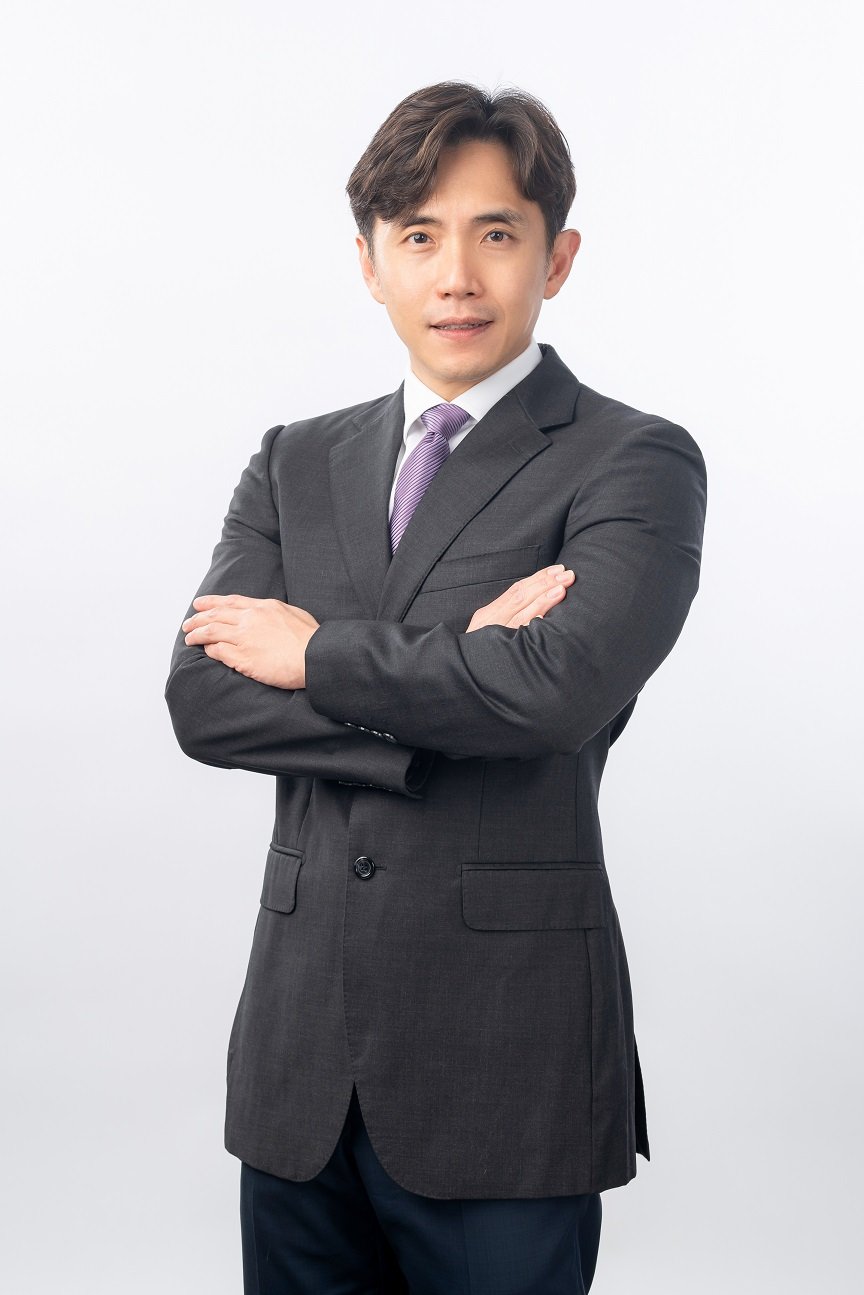-
Internal audit
In today's increasingly competitive and regulated market place, organisations - both public and private - must demonstrate that they have adequate controls and safeguards in place. The availability of qualified internal audit resources is a common challenge for many organisations.
-
IFRS
At Grant Thornton, our International Financial Reporting Standards (IFRS) advisers can help you navigate the complexity of financial reporting so you can focus your time and effort on running your business.
-
Audit quality monitoring
Having a robust process of quality control is one of the most effective ways to guarantee we deliver high-quality services to our clients.
-
Global audit technology
We apply our global audit methodology through an integrated set of software tools known as the Voyager suite.
-
Looking for permanent staff
Grant Thornton's executive recruitment is the real executive search and headhunting firms in Thailand.
-
Looking for interim executives
Interim executives are fixed-term-contract employees. Grant Thornton's specialist Executive Recruitment team can help you meet your interim executive needs
-
Looking for permanent or interim job
You may be in another job already but are willing to consider a career move should the right position at the right company become available. Or you may not be working at the moment and would like to hear from us when a relevant job comes up.
-
Practice areas
We provide retained recruitment services to multinational, Thai and Japanese organisations that are looking to fill management positions and senior level roles in Thailand.
-
Submit your resume
Executive recruitment portal
-
Update your resume
Executive recruitment portal
-
Available positions
Available positions for executive recruitment portal
-
General intelligence assessments
The Applied Reasoning Test (ART) is a general intelligence assessment that enables you to assess the level of verbal, numerical reasoning and problem solving capabilities of job candidates in a reliable and job-related manner.
-
Candidate background checks
We provide background checks and employee screening services to help our clients keep their organisation safe and profitable by protecting against the numerous pitfalls caused by unqualified, unethical, dangerous or criminal employees.

-
Capital markets
If you’re buying or selling financial securities, you want corporate finance specialists experienced in international capital markets on your side.
-
Corporate simplification
Corporate simplification
-
Expert witness
Expert witness
-
Family office services
Family office services
-
Financial models
Financial models
-
Forensic Advisory
Investigations
-
Independent business review
Does your company need a health check? Grant Thornton’s expert team can help you get to the heart of your issues to drive sustainable growth.
-
Mergers & acquisitions
Mergers & acquisitions
-
Operational advisory
Grant Thornton’s operational advisory specialists can help you realise your full potential for growth.
-
Raising finance
Raising finance
-
Restructuring & Reorganisation
Grant Thornton can help with financial restructuring and turnaround projects, including managing stakeholders and developing platforms for growth.
-
Risk management
Risk management
-
Technology & Digital Services
Technology Services
-
Transaction advisory
Transaction advisory
-
Valuations
Valuations
-
Human Capital Consulting
From time to time, companies find themselves looking for temporary accounting resources. Often this is because of staff leaving, pressures at month-end and quarter-end, or specific short-term projects the company is undertaking.
-
Strategy & Business Model
Strategy & Business Model
-
Process Optimisation & Finance Transformation
Process Optimisation & Finance Transformation
-
System & Technology
System & Technology
-
Digital Transformation
Digital Transformation
-
International tax
With experts working in more than 130 countries, Grant Thornton can help you navigate complex tax laws across multiple jurisdictions.
-
Licensing and incentives application services
Licensing and incentives application services
-
Transfer pricing
If your company operates in more than one country, transfer pricing affects you. Grant Thornton’s experts can help you manage this complex and critical area.
-
Global mobility services
Employing foreign people in Australia, or sending Australian people offshore, both add complexity to your tax obligations and benefits – and we can guide you through them.
-
Tax compliance and tax due diligence review services
Tax compliance
-
Value-Added Tax
Value-Added Tax
-
Customs and Trade
Customs and Trade
-
Service Line
グラントソントン・タイランド サービスライン
-
Business Process Outsourcing
Companies, large and small, need to focus on core activities. Still, non-core activities are important, and they need to be leaner and more efficient than most companies can make them sustainably. For Grant Thornton, your non-core activities are our core business. Grant Thornton’s experienced outsourcing team helps companies ensure resilience, improve performance, manage costs, and enhance agility in resourcing and skills. Who better to do this than an organisation with 73,000 accountants? At Grant Thornton we recognise that that outsourcing your F&A functions is a strategic decision and an extension of your brand. This means we take your business as seriously as we take our own.
-
Technology and Robotics
We provide practical digital transformation solutions anchored in business issues and opportunities. Our approach is not from technology but from business. We are particularly adept at assessing and implementing fast and iterative digital interventions which can drive high value in low complex environments. Using digital solutions, we help clients create new business value, drive efficiencies in existing processes and prepare for strategic events like mergers. We implement solutions to refresh value and create sustainable change. Our solutions help clients drive better and more insightful decisions through analytics, automate processes and make the most of artificial intelligence and machine learning. Wherever possible we will leverage your existing technologies as our interest is in solving your business problems – not in selling you more software and hardware.
-
Technical Accounting Solutions
The finance function is an essential part of the organisation and chief financial officer (CFO) being the leader has the responsibility to ensure financial discipline, compliance, and internal controls. As the finance function is critical in every phase of a company’s growth, the CFO role also demands attention in defining business strategy, mitigating risks, and mentoring the leadership. We offer technical accounting services to finance leaders to help them navigate complex financial and regulatory environments, such as financial reporting and accounting standards, managing compliance requirements, and event-based accounting such as dissolutions, mergers and acquisitions.
-
Accounting Services
Whether you are a local Thai company or a multinational company with a branch or head office in Thailand you are obliged to keep accounts and arrange for a qualified bookkeeper to keep and prepare accounts in accordance with accounting standards. This can be time consuming and even a little dauting making sure you conform with all the regulatory requirements in Thailand and using Thai language. We offer you complete peace of mind by looking after all your statutory accounting requirements. You will have a single point of contact to work with in our team who will be responsible for your accounts – no matter small or large. We also have one of the largest teams of Xero Certified Advisors in Thailand ensuring your accounts are maintained in a cloud-based system that you have access to too.
-
Staff Augmentation
We offer Staff Augmentation services where our staff, under the direction and supervision of the company’s officers, perform accounting and accounting-related work.
-
Payroll Services
More and more companies are beginning to realize the benefits of outsourcing their noncore activities, and the first to be outsourced is usually the payroll function. Payroll is easy to carve out from the rest of the business since it is usually independent of the other activities or functions within the Accounting Department. At Grant Thornton employees can gain access to their salary information and statutory filings through a specialised App on their phone. This cuts down dramatically on requests to HR for information by the employees and increases employee satisfaction. We also have an optional leave approval app too if required.
-
 IBR Optimism of Thailand Mid-Market Leaders Suggests Potential Underestimation of Challenges Ahead: International Business Report, Q1 2024Bangkok, Thailand, April 2024 — The Grant Thornton International Business Report (IBR) for Q1 2024 unveils a strikingly optimistic outlook among Thailand's mid-market business leaders, juxtaposed with the looming challenges that will shape the nation's economic future. With a Business Health Index score of 13.5, Thailand outperforms its ASEAN, Asia-Pacific, and global counterparts, signaling a robust confidence that may overshadow critical issues such as demographic changes, skills shortages, and the necessity for digital advancement.
IBR Optimism of Thailand Mid-Market Leaders Suggests Potential Underestimation of Challenges Ahead: International Business Report, Q1 2024Bangkok, Thailand, April 2024 — The Grant Thornton International Business Report (IBR) for Q1 2024 unveils a strikingly optimistic outlook among Thailand's mid-market business leaders, juxtaposed with the looming challenges that will shape the nation's economic future. With a Business Health Index score of 13.5, Thailand outperforms its ASEAN, Asia-Pacific, and global counterparts, signaling a robust confidence that may overshadow critical issues such as demographic changes, skills shortages, and the necessity for digital advancement. -
 Workshop Corporate Strategy and Company Health Check WorkshopThroughout this workshop, we will delve into the life cycle of companies, examining the stages of growth, maturity, and adaptation. Our focus will extend to the current business environment, where your Company stands today, and how our evolving strategy aligns with the ever-changing market dynamics.
Workshop Corporate Strategy and Company Health Check WorkshopThroughout this workshop, we will delve into the life cycle of companies, examining the stages of growth, maturity, and adaptation. Our focus will extend to the current business environment, where your Company stands today, and how our evolving strategy aligns with the ever-changing market dynamics. -
 Tax and Legal update 1/2024 Introducing the New “Easy E-Receipt” Tax scheme with up to THB 50,000 in Tax DeductionsThe Revenue Department has introduced the latest tax scheme, the “Easy E-Receipt”, formerly known as “Shop Dee Mee Kuen”. This scheme is designed to offer individuals tax deductions in 2024.
Tax and Legal update 1/2024 Introducing the New “Easy E-Receipt” Tax scheme with up to THB 50,000 in Tax DeductionsThe Revenue Department has introduced the latest tax scheme, the “Easy E-Receipt”, formerly known as “Shop Dee Mee Kuen”. This scheme is designed to offer individuals tax deductions in 2024. -
 TAX AND LEGAL Complying with the PDPA – A Balancing ActOrganisations must be aware of the circumstances in which they are allowed to collect data to comply with Thailand’s Personal Data Protection Act.
TAX AND LEGAL Complying with the PDPA – A Balancing ActOrganisations must be aware of the circumstances in which they are allowed to collect data to comply with Thailand’s Personal Data Protection Act.
A rise in business optimism means more organisations are on the lookout for talent, but with demand outstripping supply, where does it leave small and medium-sized enterprises (SMEs)?
The statistic that really stands out from Grant Thornton’s latest International Business Report is the dramatic rise in businesses planning to employ more workers, which is up 11 percentage points on a year ago (40% from 29%). Furthermore, every region globally has reported a year-on-year increase in employment expectations.
While this is positive news, it creates a knock-on effect in terms of talent. With global business optimism at an all-time high , firms find it harder to source the skills they need and these shortages constrain the ability of firms to operate, innovate and adopt new technologies.
It’s a problem that transcends nations. ManpowerGroup’s global Talent Shortage Survey for 2016/17 indicates that 40% of employers globally are having difficulty filling jobs. It suggests that the hardest positions to fill globally are in skilled trades and IT, closely followed by sales representatives. Survey respondents picked out the following reasons:
- A lack of applicants (24%)
- Hard skills shortages (19%)
- A lack of relevant experience (19%)
- Salary expectations (14%)
- A lack of soft skills (11%).
This scarcity of talent is exacerbated in countries with ageing populations. A Prognos report from Germany , for example, predicts that skilled workers are set to become scarce across all sectors as the nation's population ages and the number of those retiring continues to grow. Specifically, the report points to a shortage of managers, researchers, engineers, doctors, nurses and medical assistants. Openings in the creative sector and journalism will also be harder to fill, predicts Prognos.
The impact of skills shortages on SMEs
But how serious a threat do these skills shortages pose to SMEs as they look to future-proof themselves? Research suggests that SMEs see retaining and recruiting talent as their fourth-biggest challenge , after attracting customers, maintaining profitability and uncertainty over economic conditions.
“It’s a significant issue for SMEs looking to grow and minimise risk,” says Mitchell Osak, who leads the strategic advisory practice at Grant Thornton Canada, “Unlike large organisations with deep and wide talent pools, SMEs don’t have the luxury of employing a variety of specialists by functional area. The best SMEs I work with rely on a strong bench of generalists who could do a variety of tasks under different conditions. Pound for pound, a typical SME needs better average talent per employee than a larger organisation.” But can SMEs attract, cultivate and retain this talent?
Old skills gaps, new skills gaps
Mitchell says the cracks are beginning to show in Canada: “There isn’t a lot of excess capacity in the workplace. The economy is approaching full employment so we’re starting to see old skills gaps reappear as well as the emergence of new ones.”
He says: “If you look at Canada’s manufacturing sector, we’re really short of basic roles like machine tool operators – people who can set up and operate a variety of computer-controlled or mechanically controlled machine tools to produce precision metal parts – and tool and die makers. Our SMEs are trying to expand following the depths of the recession and they’re having a hard time finding skilled tradespeople like welders and electricians – a lot of those jobs left us in 2008 and now those companies have bounced back they’re finding entire workforces have evaporated.”
At the same time, Mitchell says next generation technical jobs that require knowledge of IT, analytics, automation or AI are in high demand. “Over the past ten years, SMEs in advanced manufacturing sectors like aerospace, sustainable energy and telecommunications have taken off, putting additional pressure on the labour market. A wide range of skills are in short supply, from programming to integration, given that many of these workers are currently employed in the larger automotive, energy and mining industries. Filling these roles is high on the agenda for a lot of SMEs,” he says.
Hard and soft skill shortages: exploring the causes
Of course, it’s not just a lack of hard skills. As Alistair Cox, CEO of recruitment firm Hays, wrote recently : “While technical skills, specifically around data and technology, are in great demand, soft skills continue to be as, if not more, important to employers. While the best technical skills can be taught, they will have limited impact unless your business is equipped with managers who understand what motivates their employees, can communicate with their team effectively and listen. Organisations that can marry the best technology and ‘technical’ skills with teams who have an abundance of emotional intelligence will win.”
The million-dollar question is how to achieve that victory. “It’s hard to point the finger at just one aspect,” says Mitchell, “but with hard skills, fashion is obviously a factor. It’s simply not as glamorous or fashionable to go into the trades any more even though salaries are very high. A crane operator in Canada can earn more than a doctor – upwards of CAN$150,000.
“In Canada we also have to look at a school system that places more emphasis on academic pursuits like humanities and political science and less on skills development. It’s led to a disconnect between what the market wants and what the system is supplying.”
As far as soft skills are concerned the situation appears to be getting worse in Canada, says Mitchell. “Symptoms of this are poor writing ability and a lack of basic math competencies. At the core, the problem traces to a combination of inconsistent school standards, relaxed parenting and social media, which encourages sloppiness over richness of thinking and communication. On the other hand, people up to the age of around 35 do have soft skills that my generation never had. They’re more team-based and collaborative. So while there is a shortage of soft skills I wouldn’t necessarily say it’s a game breaker.”
Opportunities for SMEs
Mitchell sees two ways to overcome the problem. The first is workforce education and training. “There is a lack of this in Canada and it’s not necessarily because the government doesn’t provide incentives or schools don’t have a full range of services and courses. Instead, it’s because a lot of SMEs don’t have the vision and patience to develop their workforces in terms of critical hard and soft skills. Fundamentally, this is a management failure.”
His second suggestion is the pragmatic and clever use of technology. A lot of the time, SMEs are behind the curve compared with larger organisations in terms of using workflow management or collaboration tools. If SMEs use these tools, they can empower their talent to be even more productive, collaborative, problem-savvy and innovative than their employees currently are. So not only do you need to train people better but you also need to use the technology, the tools that allow them to be better.
“Certainly, at Grant Thornton, we won’t have a strategy conversation with an SME without having a capability conversation around skills, culture and technology,” he says.
Building sustainable businesses for the future
Keely Woodley, who is Head of human capital at Grant Thornton UK and leading an inquiry into the future of work, agrees that education is key. “Providing training for people entering the workforce, as well as for those already there, will help close the skills gap at the medium to high level – and these are the types of jobs that really drive an economy forward.
“Governments also have a role to play in making this more immediately attractive to employers, perhaps through the tax system, but bosses need to recognise that ‘upskilling’ is in their interest,” she says.
To stay ahead, Keely recommends businesses monitor other organisations in their sector and try to do it better. Recruiters should also be flexible, open-minded and treat interviews like two-way conversations, respecting the needs of each candidate.
“Loyalty tends to be bred from non-money factors such as status, responsibility and environment,” she says. “Looking at your recruitment and retention policies from a holistic perspective will help to create an engaged workforce, which is what builds sustainable, successful businesses.”
Finding that ‘light-bulb’ moment
Mitchell has no doubts about the gains for firms that get it right: “It’s a massive opportunity. One of the metrics we often look at when we’re doing an analysis of a firm’s financial and competitive position is a simple metric: revenue and profit per employee.
“That key performance indicator is a strong driver of growth and profitability. It links directly to technology, talent and capability – and ultimately soft and hard skills. Companies that do well on this measure tend to put up market-leading financial and business results. When you compare these performers with an under-performing SME and highlight other best practices across different sectors, a light-bulb will go on in their CEO’s head and we end up having an in-depth skills, training and technology conversation with them.”
To find out more about the opportunities around skills and recruitment, contact: Keely Woodley or one of our member firm talent specialists.



